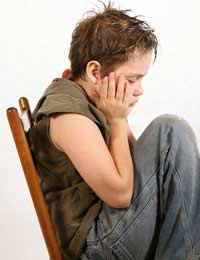'Time Out' as a Discipline Technique

Time Out is a discipline technique that takes children away from the activities which are causing conflict and gives them the time and space that they may need to calm down and think of better behavioural options. Many parents prefer to put children in Time Out in a particular location such as on a Naughty Step, but this is not totally necessary. Parents with questions regarding Time Out should read on for answers to some frequently asked questions about Time Out.
What is a Time Out?
Time Out is a discipline technique in which a child is led away from “the scene of the crime” and asked to sit quietly and alone for a given period of time. Usually a child is placed in a Time Out in a different room from where (s)he was misbehaving. Closets, rooms without lights, garages, attics and basements should not be used for Time Outs.How Long Should Time Outs Last?
As a general rule of thumb, a Time Out should last for the same number of minutes as the child’s age (eight year olds should stay for eight minutes, ten year olds for ten, etc.). However, many children remain angry or distracted for the first several minutes of a Time Out, so parents should inform them that their Time Out does not start until they can sit quietly. Parents do not need to tell their children how long a Time Out will last, though they should tell children that they must remain in Time Out until they return to speak with them again.Can Time Outs be used on Children of All Ages?
Time Outs only work for children who understand that they should use their quiet time to reflect on their behaviour. Generally this means that children between the ages of three and ten years respond best to Time Outs. Some parents do find that short Time Outs also work with children as young as two years of age, but this will depend upon the specific child.Should Parents be Present during Time Outs?
Parents should supervise Time Outs in order to ensure that their child is safe, but the point of a Time Out is to remove attention from the child and allow him/her the time to think through their misbehaviour. For this reason, even if parents remain in the same room as a child during a Time Out they should ignore the child for the duration.How Should Time Outs End?
When the child has sat quietly for as long as the parent deemed necessary, the parent should return to the child and tell him/her that their Time Out is over. Parents should use this time to speak with their child about why they were put in Time Out and how they could avoid these behaviours in the future. Parents should also prompt their child to apologise for his/her misbehaviour.Time Out is a popular discipline technique with modern parents. A Time Out allows a child to get away from the causes of his/her misbehaviour and calm down away from prying eyes. Time Out also allows children the time to think over their misbehaviour and work through more appropriate options. Parents who use this technique should remind all other caregivers and babysitters of its benefits as well.
- B.F. Skinner's Behavioural Theory
- The Effects of Punishment on Children
- 'The Naughty Step' as a Discipline Technique
- Discipline Outside The Home
- Disciplining Children
- Disciplining Young Children
- Chores for Children
- Behavioural Disorders in Children
- Common Behavioural Problems in Children
- Reinforcing Good Behaviour
- Rewarding Good Behaviour
- Child Temper Tantrums
- The 'Terrible Twos'


Re: Speech Therapy for Children
Dear Speech Therapy Clinic, I am writing to inquire about speech therapy services for my 3-year-old son. I have noticed that he…
Re: Child Temper Tantrums
I often use my book center for a calm down center. It is not a punishment but a place to take a break and calm down quietly
Re: Mahler's Theory of Development
I'm learning a lot about the end theories .
Re: Child Temper Tantrums
As an assistant director, I get brought kids who the teachers are struggling with to help calm them down. I bring them into my office, we…
Re: Brain Development in Young Children
Hi I have a son. He is 2 and half years old and he is diagnosed with autism. He doesn’t respond to his name and appears…
Re: Child Temper Tantrums
i think once you start to learn the child handling their behavior is easier. it takes time but patience is a virtue!
Re: Erikson's Theory of Psychosocial Development
No, children develop in their own pace for example, a 1-year-old would develop to hold a pencil and another…
Re: Extra Tutoring: How Do I Pay?
i am looking to help out students with private tuition as their parents cant afford it i would like to apply for grants or…
Re: The 'Terrible Twos'
child throws temper tantrum when its cleanup time even when singing the cleanup song, hits my hand and starts pulling the toys back out of the…
Re: Child Temper Tantrums
we work with 5 year olds to 12 year olds.We try to tell the kids what are the basic rules the first day of school.We call them friends from…